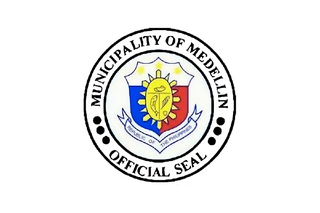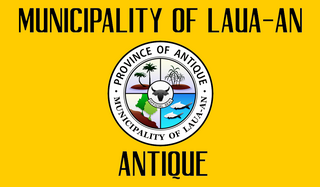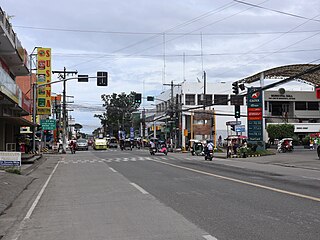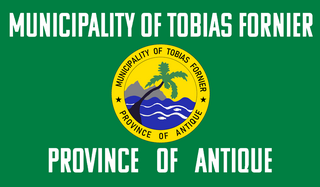This article needs additional citations for verification .(February 2013) |
Belison | |
|---|---|
| Municipality of Belison | |
 Belison Municipal Hall | |
 Map of Antique with Belison highlighted | |
Location in the Philippines | |
| Coordinates: 10°50′17″N121°57′38″E / 10.8381°N 121.9606°E | |
| Country | Philippines |
| Region | Western Visayas |
| Province | Antique |
| District | Lone district |
| Founded | March 10, 1961 |
| Barangays | 11 (see Barangays) |
| Government | |
| • Type | Sangguniang Bayan |
| • Mayor | Christopher H. Piccio |
| • Vice Mayor | Darell B. dela Flor |
| • Representative | Loren Legarda |
| • Municipal Council | Members |
| • Electorate | 9,935 voters (2022) |
| Area | |
• Total | 19.78 km2 (7.64 sq mi) |
| Highest elevation (Mount Igtangitang) | 237 m (778 ft) |
| Lowest elevation | 0 m (0 ft) |
| Population (2020 census) [3] | |
• Total | 14,129 |
| • Density | 710/km2 (1,900/sq mi) |
| • Households | 3,412 |
| Demonym | Bilisongnun |
| Economy | |
| • Income class | 5th municipal income class |
| • Poverty incidence | 13.91 % (2021) [4] |
| • Revenue | ₱ 31.33 million (2012), 34.77 million (2013), 38.72 million (2014), 44.07 million (2015), 48.32 million (2016), 54.07 million (2017), 60.81 million (2018), 62.69 million (2019), 95.16 million (2021), 103.1 million (2022) |
| • Assets | ₱ 47.31 million (2012), 53.3 million (2013), 63.74 million (2014), 80 million (2015), 84.18 million (2016), 91.48 million (2017), 150.7 million (2018), 209.4 million (2019), 323.6 million (2021), 355.3 million (2022) |
| • Expenditure | ₱ 24.88 million (2012), 27.09 million (2013), 28.16 million (2014), 36.61 million (2015), 40.67 million (2016), 39.29 million (2017), 47.07 million (2018), 55.75 million (2019), 65.25 million (2021), 83.46 million (2022) |
| • Liabilities | ₱ 11.6 million (2012), 11.36 million (2013), 12.3 million (2014), 21.09 million (2015), 23.08 million (2016), 15.47 million (2017), 58.38 million (2018), 58.14 million (2019), 113.8 million (2021), 149.5 million (2022) |
| Service provider | |
| • Electricity | Antique Electric Cooperative (ANTECO) |
| Time zone | UTC+8 (PST) |
| ZIP code | 5701 |
| PSGC | |
| IDD : area code | +63 (0)36 |
| Native languages | Karay-a Hiligaynon Tagalog |
| Website | www |
Belison (/bɛˈlison/), officially the Municipality of Belison (Kinaray-a : Banwa kang Bilisong, [bɪˈlisʊŋ]; Hiligaynon : Banwa sang Belison; Tagalog : Bayan ng Belison), is a municipality in the province of Antique, Philippines. According to the 2020 census, it has a population of 14,129 people. [3]
Contents
- History
- Geography
- Climate
- Barangays
- Demographics
- Religion
- Economy
- Government
- Municipal seal
- References
- External links
Belison is the smallest (in area and population) [5] and the youngest municipality in the province of Antique. [6]






















